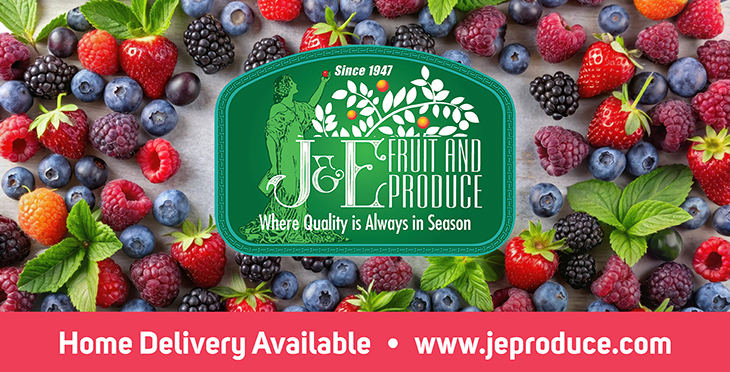12-Person Show at AMP
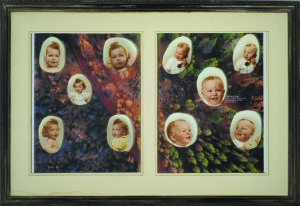
Works by Barbara E. Cohen and Jay Critchley occupy the same wall at Art Market Provincetown (432 Commercial St.) right now. Cohen’s four paintings depicting a three-dimensional cube emerging from a one-dimensional background have a Pop Art aesthetic: flashy color and brushstrokes so smooth that, in two of the paintings, they’re barely visible. Cohen’s cube series is about housing insecurity. The cubes, representing houses, are uprooted from one canvas to the next, rolling around like dice, completely without foundation.
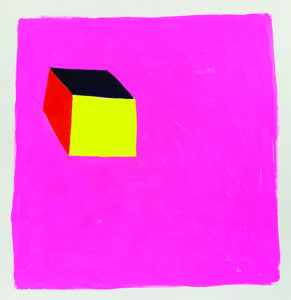
Critchley’s series of six collages, titled Baby Boomers, depicts cutouts of baby photos from the late 1950s superimposed on images of deforestation, dump yards, and police brutality. The baby photos, which Critchley found in a Truro swap shop, are of two rather odd-looking babies striking ridiculous poses. The series, with its title, becomes a pointed finger, asking how a generation could lead us here.
Cohen and Critchley are two of the artists in a 12-person show on display at AMP through July 13. For more information, visit artmarketprovincetown.com. —Paul Sullivan
Sculpture at Castle Hill
Large sculptures are often impractical to exhibit. Castle Hill’s opening of the sculpture garden at Edgewood Farm in Truro (3 Edgewood Way) provides a rare, refreshing opportunity to experience large-scale sculpture on the Outer Cape. The works in this 50th Sculpture Invitational — opening July 1 from 4 to 6 p.m. — animate the grounds, shifting the way the viewer experiences the space.
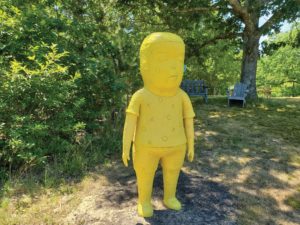
A large serpent, weaving in and out of a hill, greets visitors. Justin Cifello created the piece from invasive woody plants, twisting them together to create this prickly greeter. Ellyn Weiss also disrupts the setting with an installation of plastic bags delicately woven into a wire armature. Crawling up the side of a tree, the sculpture feels invasive, challenging the viewer to consider environmental threats even in an oasis like Edgewood Farm.
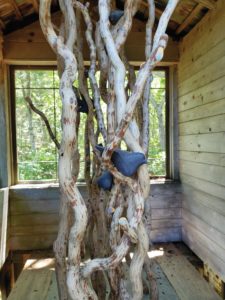
Rob Silverstein’s Swing Dancing features two curvy shapes. Playing to sculpture’s strength, Silverstein positions the parts so that their relationship shifts according to the viewer’s vantage point. Despite the heaviness of the material, the sculpture is surprisingly playful and nimble.
Likewise, David Boyajian juxtaposes steel’s heaviness with a swaying, whimsical image in his 11-foot sculpture of flowers. The petals appear as red birds in flight.
Kensuke Yamada’s cartoonish bright-yellow figure is hilarious, standing at the top of a hill looking down on a field. With eyes closed and hands by his side, he looks like a sleepwalker.
Yamada’s use of clay to create an image referencing Japanese pop culture is unexpected, as are small details in the sculpture, such as one blue ear and the surprisingly realistic hands. —Abraham Storer
Food Writing at Castle Hill
At the Truro Center for the Arts at Castle Hill, Katherine Alford and Kathy Gunst will lead a food writing workshop committed to helping people find their voices — something Alford says is an essential part of writing, whether it’s a long novel or a short recipe.
“Food is such a universal way to tell a story,” says Alford, who is a regular contributor to the Independent. “It’s transformative in terms of memory, sight, and smell, engaging all the senses.”
There’s a lot of bad food writing out there, she says. This workshop teaches an alternative to what she describes as the default: “ ‘Yum, yum, grandmother’s hands’ kind of stuff.”
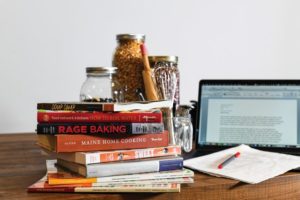
Participants will write together, share their work, and have light reading homework. Alford says, over the years, the quality of the writing that has come out of the class has been inspiring.
She wants participants “to feel that they have a toolkit and are ready to dig in” when the workshop is over. Food is a lens through which one can see the world in a different way, she says. Good writing focuses the lens.
“When food writing is good,” says Alford, “when it transforms you and is able to tell a great story about just being human, people really connect.”
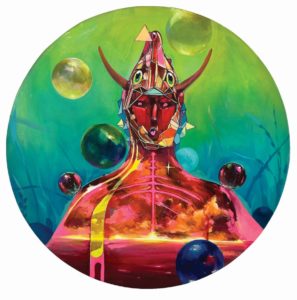
The workshop runs from July 11 to 15 in five sessions, 1 to 3 p.m. For more information, visit castlehill.org. —Dorothea Samaha
Two Brothers, Two Styles
“Two brothers, both very talented, with totally different, unique styles,” says Joey Rugo of Gris One and Hanimal, brothers from Bogotá, Colombia. Works by the two brothers compose the latest show at Rugo’s Rugosa Gallery (4100 Route 6, Eastham). The show, Hermanos, runs through July 5.
The brothers participated in the “Rugosa residency” this spring. Gris One paints with vibrancy and color, while younger brother Hanimal works almost exclusively in black and white. This contrast of color and style is a pleasing stimulus to the eye.
Hanimal uses a fine-tipped pen to create detailed depictions of fantastical creatures, figures, and scenes on canvas. Several pencil-on-paper “micro-drawings” by Hanimal are featured as well.
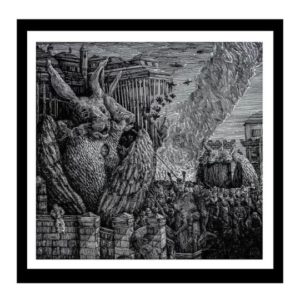
“The craziest thing about his drawings,” Rugo says, “is that Hanimal doesn’t sketch the scene and then go back to fill it in. He draws like a printer would print, from top to bottom.”
Magnifying glasses are on display at the gallery for viewers to enlarge the intricate details.
The work of Gris One exists “between the universe of graffiti and art galleries,” according to an artist bio. Pieces in Hermanos range from vibrant and abstract acrylic animals, figures, and scenes on canvas to mixed-media portraits that play with geometry and color. —Isabelle Nobili
